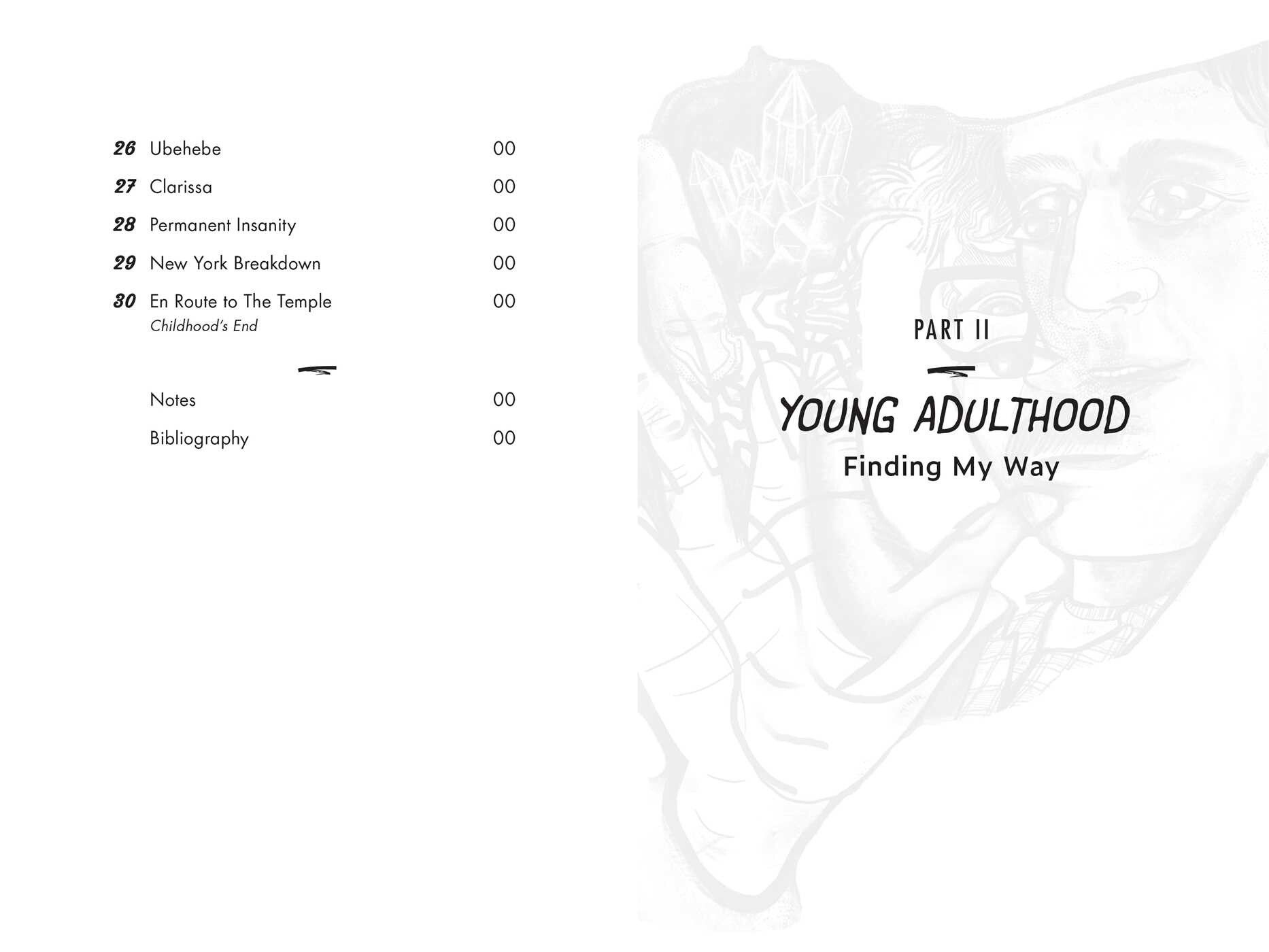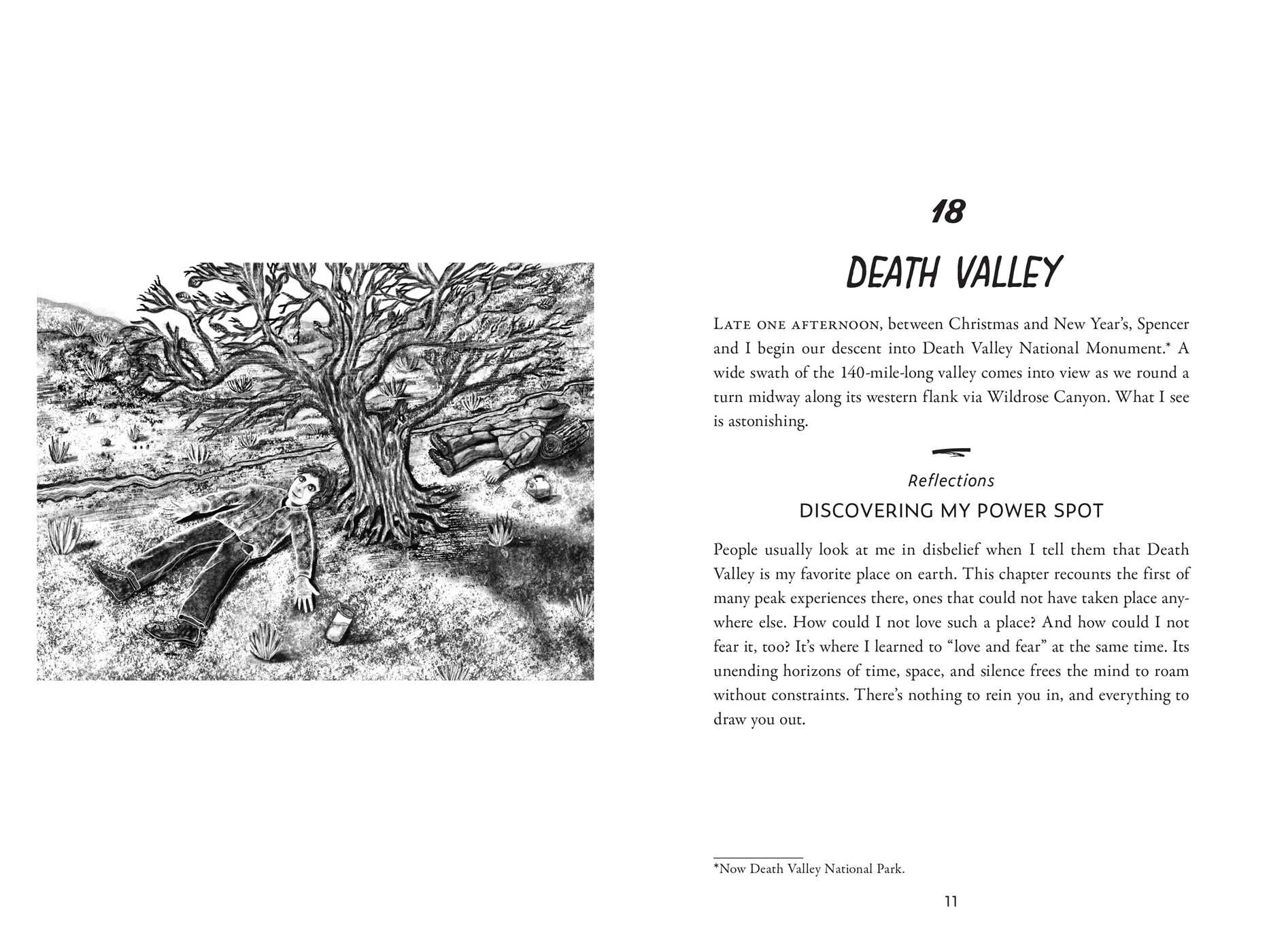Get our latest book recommendations, author news, competitions, offers, and other information right to your inbox.
My Altered States
A Doctor's Extraordinary Account of Trauma, Psychedelics, and Spiritual Growth
Table of Contents
About The Book
“You're such an important part of the psychedelic history.”—Joe Rogan Experience, episode #1854
• Recounts several dozen of the author’s experiences of drug and non-drug altered states of consciousness from birth to early adulthood
• Applies the lenses of four explanatory models—psychoanalysis, psychopharmacology, Zen Buddhism, and medieval Jewish metaphysics—in understanding how and why they occurred
• Demonstrates the importance of careful unflinching recollection and documentation of both heavenly and hellish altered states in one’s psychological, emotional, and spiritual life
Why do we seek out altered states of consciousness, or why, in some cases, do they happen unbidden? What do we see and hear, and what happens emotionally, physically, and psychologically? How and why are these experiences different from or similar to one another? Are they meaningful? And what do we do with them after they have passed?
Addressing these questions, renowned psychedelic researcher Rick Strassman, M.D., draws upon his journals and analyses of dozens of episodes of altered consciousness that occurred during, or are intimately tied to, his life between birth and young adulthood. Just as significant as the ecstatic blissful experiences are the uncensored and, at times, painfully unvarnished narratives of less elevated ones. Visually augmenting all these accounts are the striking images of artist Merrilee Challiss.
Understanding and applying the meaning and message of any altered state—its integration—first requires a clear-eyed recollection of the actual experience in all its aspects, neither pushing away the ugly nor grasping after the beautiful. This book provides a profound example of how one might go about accomplishing this daunting task.
Excerpt
The following chapters recount several types of altered-state experiences. One category is memories of actual altered states that occurred during childhood. An example is my discovering meditation in second grade. Another type includes visions of childhood experiences that I witnessed during an altered state as an adult. These may be memories of real events. While I do not devote a chapter to this particular experience, I mentioned it in the previous chapter. In it, I relived one day on a psychedelic drug as an adult an allergic reaction I had to a chocolate cookie as a toddler. Later on, my mother verified the truth of that memory. Reexperiencing my forceps delivery in the previous chapter, however, “The Beginning,” may straddle the line between real and imagined.
Some “childhood visions” I saw during an altered state in adulthood are unlikely to have occurred in real life. Rather, they are like dreams whose contents represent a condensed symbolic representation of one’s mental state. A case in point is my vision of suffering sexual abuse that appeared while meditating in “Prayer Wheel.” Here, the vision’s contents and associated emotions corresponded to how I felt about my relationship with my parents when I was an infant. In addition, a vision may convey normally suppressed thoughts and emotions linked to being part of a larger historical and cultural universe without actually having undergone the events in question. The chapter describing past lives and deaths in “The Beginning” describes my sense of what it must have felt like for my ancestors in Eastern Europe during a particularly deadly phase of anti-Semitism.
THE EARLY MIND
What is our nature and how have others nurtured it? As these chapters deal with infancy and early childhood, I wish to briefly introduce models that help us address and understand these issues. Infant temperament is the earliest precursor of adult personality. It’s what the baby is like, its attributes or characteristics. While differences exist among classification systems, temperament usually falls into four broad categories: (1) warm, optimistic, social; (2) relaxed, apathetic, slow-moving; (3) analytical, quiet, nostalgic; and (4) irritable, quick to react.
Temperament is congenital, present at birth. It is the product of a confluence of multiple biological functions: hormonal, immunological, gastrointestinal, cardiac, and nervous system/brain. If you include past lives, our new body resonates with that previous consciousness, which now influences and is influenced by a new set of biological parameters.
Attachment style is the intermediate stage between infant temperament and adult personality. It is a general pattern of interactions between the infant/toddler and caregivers. The newborn has its unique temperament, and this temperament mediates its interactions with the world. And the most important interactions are with people.
The responses the infant elicits in those around it feed back onto the child, encouraging certain responses and discouraging others. As with temperament, attachment style classifications vary, but four types that researchers regularly cite are (1) secure, (2) insecure, (3) avoidant, and (4) anxious. We sometimes come across (5) disorganized. The quality of the “fit” between caregiver and infant influences this behavioral shaping, especially its emotional aspects. If the fit is good, the degree of stress is manageable for the child; otherwise, fundamental attachment interactions—such as feeding, discipline, and bedding down—become traumatic. For example, an insecure infant may respond well to a highly attentive and doting mother, while a secure independent one may find such a parent uncomfortably intrusive.
Adult personality is the final result of the process that begins with biological temperament and then interpersonal attachment style. Now, structures and processes are in place and modifying them is less likely. Contemporary psychology research has characterized five factors constituting adult personality: (1) extraversion, (2) agreeableness, (3) conscientiousness, (4) neuroticism, and (5) openness to experience.
Psychoanalysis also proposes a model of personality with roots in infancy and toddlerhood. For example, newborns and infants progress through psychophysiological stages: oral, anal, and genital. In each, the psychic–life force, or libido, concentrates upon and develops within one set of biological structures and functions before moving on to the next. Later, young children’s interactions make their way through more-or-less hardwired interpersonal milestones; for example, the “Oedipal phase.” * Adult personality finally forms—healthy or disordered to various degrees, including obsessive, hysteric, depressive, narcissistic, schizoid, and borderline.
Maimonides—the thirteenth-century rabbi, physician, and philosopher— suggested that character is what God gives us to overcome. This doesn’t mean we must change our character, whose essential building blocks of temperament are biological. Rather, the idea is the following: We are what we do by choice, and not who we are by nature. We can modify our behavior—behavior that our inborn traits make likely—for good or ill. For example, we may be stingy by nature, but we can learn to practice generosity, thereby neutralizing a negative temperamental disposition. By virtue of our generous behavior, we become a generous person, even though our nature remains the same.
My temperament at birth was social, inquisitive, and intensely engaged. At the same time, I was irritable and quick to react. I was alert and responsive, restless, curious, and easily frustrated. If I didn’t like something, I knocked it over. If I didn’t get my way, I cried and threw a tantrum. These temperamental features also resulted in unpleasant sensitivity to sounds such as noisy eating or breathing. My parents’ personalities were less than ideally suited to deal with my temperament, leading to an attachment style with significant insecure and anxious features.
The flip side of this elevated reactivity was my responsiveness to positive influences, such as friends and teachers, as well as the beauty of the natural world. Finally, I possessed strong powers of concentration, both regarding objects in the external as well as internal worlds. While time and inner work modified these early temperamental features, attachment styles, and personality, the broad outline of my adult character and behavioral style was, like most of us, apparent at an early age.
From Chapter 1
1 FLYING BABY
I have always enjoyed being high, but how far back does “always” go? The answer comes to me surprisingly late, in my early sixties. A month after my sixty-second birthday, my life takes a turn for the worse. Two near-fatal infections and two failed relationships, both within a year, prompt my beginning a course of weekly psychotherapy that lasts more than four years. I am committed to finding out how things have gotten so off course.*
Once the acute phase of psychotherapy is over, my therapist and I begin to dig deeper. As my sickness resulted from an ill-advised trip to visit a woman I met online, examining these events gradually segue into discussing my former marriage, stepchildren, and divorce. The death anniversary of my stepdaughter reminds me of having so few photographs of life with my family. At the end of our marriage, my ex seemed to have taken every photo.
“Why did she take them all?” I ask rhetorically.
“What photos do you have from then?” Merle asks in her casually incisive manner.
“Good question,” I reply. “I haven’t looked in a long time.”
Returning home, I search for photos I might have tucked away in an obscure corner. I find a manila envelope in the back of a drawer of an ancient file cabinet, behind the “House refinance” folder. I open it and out spill dozens of mostly black-and-white photos. One catches my eye. On its back is my mother’s handwriting, “September 1952. Rick, 8 months.” I was born in February, so the date or my age is inaccurate.
I wonder what she was thinking.
I am lying on my abdomen on a blanket on the lawn in our backyard, wearing a white T-shirt and a white diaper. My legs splay out froglike behind me. I am stocky, healthy flesh, no visible bones. A full head of dark hair, neatly cut, short bangs covering a half-inch of my prominent forehead, which takes up half my face. I am lifting my chest, my head is four-to-six-inches off the ground, and my chin is parallel to it. My right arm fully extends behind me, and my left must be as well, but it’s not visible. My right palm faces outward. I’m in the yoga cobra pose, but not using my arms for support or balance. This position requires great muscular exertion; however, it appears effortless. It looks as if I am flying, my arms behind me.
Product Details
- Publisher: Park Street Press (December 10, 2024)
- Length: 320 pages
- ISBN13: 9781644119808
Browse Related Books
Raves and Reviews
“ . . . Having the mind and the courage . . . You’re such an important part of the psychedelic history of this country because what you did is you legitimized a very important thing."
– Joe Rogan, from a conversation with Rick Strassman, M.D., regarding his contributions to psychedelic
“A remarkable memoir from a trailbreaking consciousness explorer. Strassman, in describing his own development from altered state to altered state, has written honest, candid reports of his own trips. A unique set of stories illuminating what became his extraordinary life.”
– James Fadiman, Ph.D., author of The Psychedelic Explorer’s Guide
“For those of us who seek a path to better understanding of ourselves and how our own behavior affects others, and who are willing to dive deep into the mystery of consciousness, Rick Strassman’s My Altered States provides much food for thought. I highly recommend it!”
– Graham Hancock, host of Netflix's hit documentary series, Ancient Apocalypse and author of Fingerpri
“An illuminating autobiographical exploration of pioneering psychedelic researcher Rick Strassman’s early life and firsthand experiences with altered states of consciousness. . . . This sensitive and self-revealing examination of how these powerful compounds affected Dr. Strassman’s personal evolution and his insights into the potential impact of psychedelics make a valuable contribution to our understanding of human consciousness and the potential for new and valuable psychiatric treatments.”
– Charles S. Grob, M.D., professor of psychiatry at the UCLA School of Medicine
“In his gripping, painfully honest memoir My Altered States, eminent psychedelic researcher Rick Strassman delves into the risks as well as spiritual potential of psychedelics. As capitalists seek to monetize these remarkable substances, Strassman’s book provides a much-needed counterpoint to the hype and hoopla.”
– John Horgan, science journalist and author of The End of Science
“Brave, honest, real, self-critical, deeply personal, and well-told, Rick Strassman’s account of his formative years casts compelling light on his subsequently pioneering career in psychedelic science. A necessary contribution.”
– Jeremy Narby, coauthor of The Psychotropic Mind
“Rick Strassman’s memoir is a gift defined by both raw honesty and a distinct literary beauty. He shows us how scientific exploration itself can be an altered state, guiding us deeper into practices like meditation, psychedelics, and psychoanalysis. Get ready for a wild ride, including a telepathic one on a flying carpet.”
– Jeffrey J. Kripal, author of How to Think Impossibly
“If you want to know what shaped the mind of one of the most important and influential psychedelic scientists of the last century, I can’t recommend this book highly enough.”
– Andrew R. Gallimore, Ph.D., neurobiologist and author of Reality Switch Technologies
“The doyen of DMT studies finally begins to share his personal experiences with psychedelics—as well as his personal history—in this wise, intimate, funny, at-times disturbing, always heartfelt memoir. It covers his life up to the time he joined a Zen Buddhist monastery while on leave from medical school in his early twenties. I highly recommend this book.”
– Tao Lin, author of Trip: Psychedelics, Alienation, and Change
“This book is a magnificent treat, offering page-turning accounts that are as fascinating as they are engaging. . . . Beyond the usual altered states, Strassman explores unconventional and rarely recognized types of shifted consciousness with elegance and wisdom gained from years of reflection. . . . My Altered States is a mind-expanding treasure, illuminating the depths of human consciousness with a rare and captivating brilliance.”
– David Jay Brown, coauthor of The Illustrated Field Guide to DMT Entities
“My Altered States successfully bridges psychopharmacology and psychotherapy in a coherent whole that will satisfy the initiated as well as the lay reader who, like Dr. Strassman, seek to tap into the deepest mysteries of the mind."
– Tadeo Feijão, M.D., president of the União do Vegetal (UDV) General Directorate
“Rick has taken on the daring task of writing about how various substances have affected his consciousness. He does so by immersing us into his own soul and circumstances in an honest, elegant, and engaging style that also triggers self-reflection. This book is a gem.”
– Luis Eduardo Luna, Ph.D., coauthor of Inner Paths to Outer Space
“As mainstream culture prepares to embrace psychedelics as medicine, Dr. Strassman’s accessible and poignant stories help contextualize the kinds of experiences we might expect for ourselves and our loved ones, from states of bliss and self-acceptance to gnawing anxiety and unexplored shame. Highly recommended.”
– Katherine MacLean, Ph.D., author of Midnight Water
“This is not your average travelogue, but one written by a master of the psychedelic movement. A must-read for any aspiring or experienced psychonaut with core teachings for psychedelic guiding.”
– Daniel McQueen, author of Psychedelic Cannabis
“From his harrowing visions of his ancestors’ persecution as Eastern European Jews to his humorous tales of getting high for the first time, Rick speaks to and for us all, recounting the journey of a soul striving for connection and grounding through body and mind.”
– Madison Margolin, journalist and author of Exile & Ecstasy
“A fascinating investigation of consciousness through the lens of an extraordinarily intrepid explorer. Dr. Strassman brings courage, humor, and a hard-earned humility to the journey of self-discovery, venturing into the heights and depths of what it means to be a conscious human, bringing back gifts of perspective and wisdom for us all.”
– Rabbi Shefa Gold, author of Torah Journeys
“From a childhood obsession with fireworks to the medical doctor’s now famous experiments with mental dynamite, My Altered States is the antidote to today’s psychedelic hype: the true story, warts and all, of an unusually curious mind.”
– Travis Kitchens, writer
“An atlas for the wounded who hope to heal, a mirror for the healed who hope to understand, and a beacon for the lost who can’t yet see the path beneath their feet. . . . Rick’s story is a gospel for seekers who straddle the fence between the scientific and the mystical, the extrarational and the rational.”
– Rachel Rumstein, book club coordinator at Intercollegiate Psychedelics Network Labs
“Strassman writes with an engaging directness—his prose deftly toggles between sarcastic observations and sincere confessions, bringing heartfelt intensity to his observations on love, heartbreak, therapy, and particularly the wild experiences he’s had under the influence of various psychedelic drugs. His descriptions are remarkably vivid . . . every reader will find this account fascinating. A lively and intensely personal addition to the drugs-memoir genre.”
– Kirkus Reviews
Resources and Downloads
High Resolution Images
- Book Cover Image (jpg): My Altered States eBook 9781644119808


















